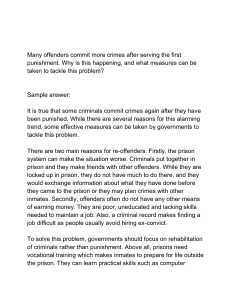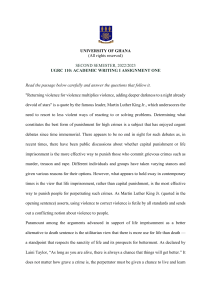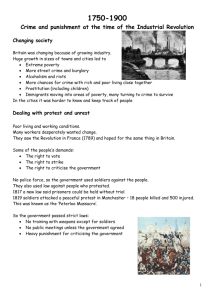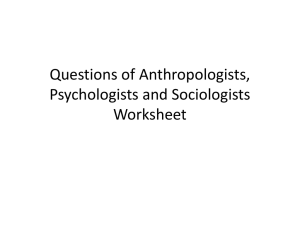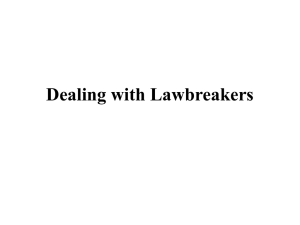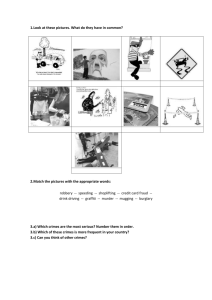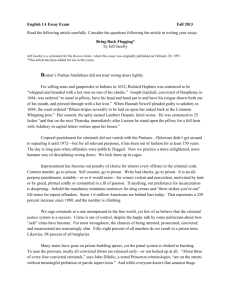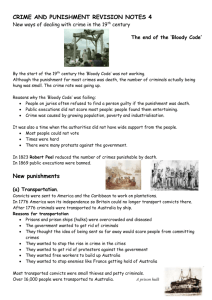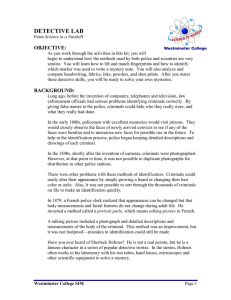Victorian Crime and punishment
advertisement
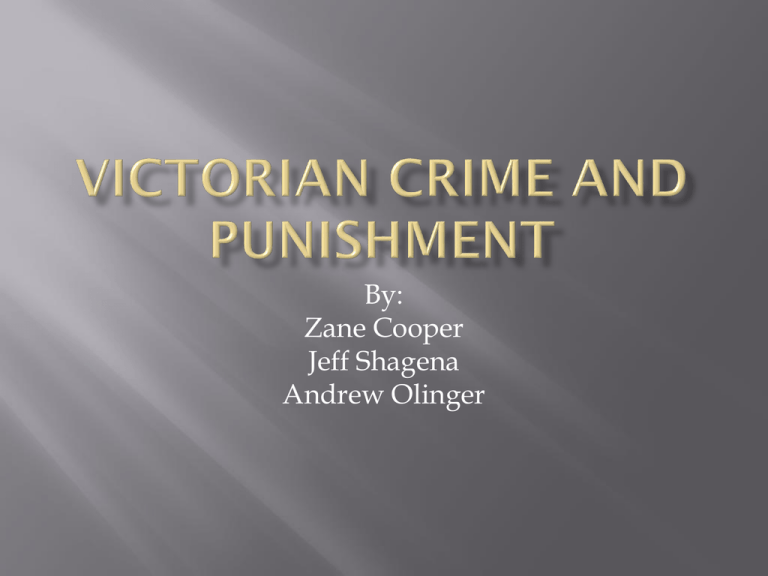
By: Zane Cooper Jeff Shagena Andrew Olinger Minor crimes included drunkenness, vagrancy, and wandering around without employment Major crimes included murder, any rape that resulted in death, and major burglary In the court systems, judges and prosecutors had much more power Criminals were treated very poorly in prison, as they were considered the lowest social class The “silent system” was later induced in the prisons, along with hard labor Hanging was the main form of capital punishment, but people were being hanged for stupid crimes like stealing onions Transportation was also a main form of capital punishment Crimes such as homicide, rape, violent robberies, etc. However, due to the judicial corruption, anybody could be sentenced to capital punishment Policemen Sir Robert Peel Father of modern policing Metropolitan Police Force Peelian Principles Early 1800s - Criminals were considered to be only lower, working class members who wanted to live an “easy life” Mid-1800s - only the poor were considered criminals Could be discerned just by appearance Late 1800s – criminals had behavior problems or were not raised well Social Darwinism became popular Headquarters of Metropolitan Police Colonel Charles Rowan and Richard Mayne Central Criminal Court of England and Wales Next to Newgate Prison Infamous prison used for centuries Became the site of London’s gallows in 1783 Demolished in 1904 London’s main prison Terrible conditions for especially women and children Pre-1800s Often viewed as a sympathetic hero Post-1800s No more sympathy Shifted towards detectives The half strangling of unwary pedestrians from behind. Very common crime Commonly practiced by two people. One attacker and one robber. Attacker would strangle a person from behind while the robber stripped the person of valuables and money. Caused wide spread panic in London Late 1880’s London – East Quarter – Whitechapel 77,000 People Large Jewish immigrant population Resentment Unsanitary Poverty Crime Highest death rate Prostitution Mary Ann Nicholls – 3:40 AM – August 31st Charles Cross – Bucks Row – PC (Police Constable) John Neil Annie Chapman – 6:00 AM – September 8th John Davis – Hanbury Street – The Leather Apron Elizabeth Stride – 1:00 AM – September 30th Louis Deimshutz – Berners Street Catharine Eddowes – Three Jewish Men 1:35 AM – September 30th – PC Watkins 1:45 AM – Mitre Square The Mysterious Message PC Alfred Long – Eddowes Apron – “The Juwes are the men That Will be blamed for nothing” Mary Kelly – November 9th - George Hitchinson 2:00 AM – Dorset Street –Cries of Murder! 4:00 AM 10:45 Thomas Bowyer Hatred of Jews – Leather Apron incidents Fear and suspicion strikes the people of London. Sensationalist coverage Xenophobia and Anti-Semitism Letters Failure of the police Social Reforms http://www.jack-the-ripper.org http://www.historytoday.com/emelynegodfrey/stranglehold-victorian-society http://www.victorianweb.org/history/crime/ banerjee1.html http://www.jack-the-ripperwalk.co.uk/jack_the_ripper_history.htm http://curiosity.discovery.com/question/jackrippers-murders-affect-london
